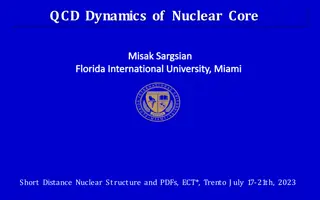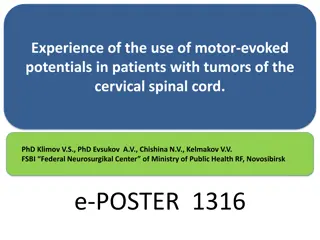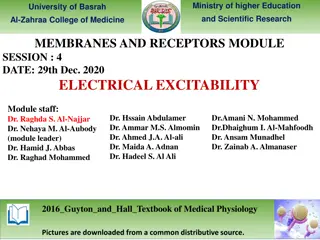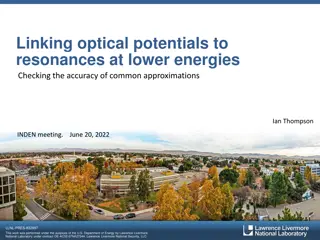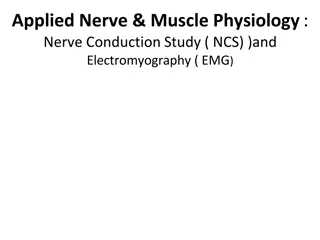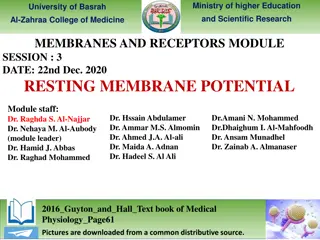The Bioelectric Potentials(contd.)
This content delves into EEG brain wave classification, patterns, and applications in monitoring brain activity, identifying damage, testing cognitive engagement, and investigating neurological disorders like epilepsy. EEG offers fast recording of neural activity and complements MRI for better brain imaging resolution.
Download Presentation

Please find below an Image/Link to download the presentation.
The content on the website is provided AS IS for your information and personal use only. It may not be sold, licensed, or shared on other websites without obtaining consent from the author.If you encounter any issues during the download, it is possible that the publisher has removed the file from their server.
You are allowed to download the files provided on this website for personal or commercial use, subject to the condition that they are used lawfully. All files are the property of their respective owners.
The content on the website is provided AS IS for your information and personal use only. It may not be sold, licensed, or shared on other websites without obtaining consent from the author.
E N D
Presentation Transcript
The Bioelectric Potentials(contd.) By: Somesh Kumar Malhotra Assistant Professor, ECE Deptt.,UIET,CSJM University
EEG Brain waves classification For obtaining basic brain patterns of individuals, subjects are instructed to close their eyes and relax. Brain patterns form wave shapes that are commonly sinusoidal. Usually, they are measured from peak to peak and normally range from 0.5 to 100 V in amplitude, which is about 100 times lower than ECG signals. By means of Fourier transform power spectrum from the raw EEG signal is derived. In power spectrum contribution of sine waves with different frequencies are visible. Although the spectrum is continuous, ranging from 0 Hz up to one half of sampling frequency, the brain state of the individual may make certain frequencies more dominant. Brain waves have been categorized into four basic groups - beta (>13 Hz), - alpha (8-13 Hz), - theta (4-8 Hz), - delta (0.5-4 Hz).
EEG Applications The greatest advantage of EEG is speed. Complex patterns of neural activity can be recorded occurring within fractions of a second after a stimulus has been administered. EEG provides less spatial resolution compared to MRI . Thus for better allocation within the brain, EEG images are often combined with MRI scans. EEG can determine the relative strengths and positions of electrical activity in different brain regions.
EEG According to R. Bickford research and clinical applications of the EEG in humans and animals are used to: (1) monitor alertness, coma and brain death; (2) locate areas of damage following head injury, stroke, tumour, etc.; (3) test afferent pathways(signals come outside stimuli and tell your brain what they are sensing) (by evoked potentials); (4) monitor cognitive engagement (challenging task) (alpha rhythm); (5) produce biofeedback situations, alpha, etc.;
EEG (6) control anaesthesia depth ( servo anaesthesia ); (7) investigate epilepsy (a neurological disorder marked by sudden recurrent episode of sensory disturbance ,loss of conciousness, associated with abnormal electrical activity in the brain) and locate seizure (an epileptic fit, the outward effect can vary from uncontrolled jerking movement (tonic- clonic seizures) to as subtle as a momentary loss of awareness(absence seizure)) origin; (8) test epilepsy drug effects; (9) assist in experimental cortical excision of epileptic focus (cutting away of brain tissue from the area of brain that consist epileptic focus {area of brain that generate cinical seizures}); (10) monitor human and animal brain development; (11) investigate sleep disorder and physiology.
EMG EMG can be recorded in two ways: 1. Surface EMG (SEMG ,which records EMG using electrodes placed on skin) which is more popular than 2. Intra muscular EMG (a needle electrode is inserted inside the muscle) as it is non-invasive. SEMG measures the muscle fibre action potential of a single(or more) motor units, which are known as the motor unit action potentials(MUAPs)
EMG Electromyography is measuring the electrical signal associated with the activation of the muscle. This may be voluntary or involuntary muscle contraction. The EMG activity of voluntary muscle contractions is related to tension. The functional unit of the muscle contraction is a motor unit, which is comprised of a single alpha motor neuron and all the fibers it enervates. This muscle fiber contracts when the action potentials (impulse) of the motor nerve which supplies it reaches a depolarization threshold. The depolarization generates an electromagnetic field and the potential is measured as a voltage. The depolarization, which spreads along the membrane of the muscle, is a muscle action potential.
EMG The motor unit action potential is the spatio and temporal summation of the individual muscle action potentials for all the fibers of a single motor unit. Therefore, the EMG signal is the algebraic summation of the motor unit action potentials within the pick-up area of the electrode being used. The pick-up area of an electrode will almost always include more than one motor unit because muscle fibers of different motor units are intermingled throughout the entire muscle. Any portion of the muscle may contain fibers belonging to as many as 20-50 motor units.








